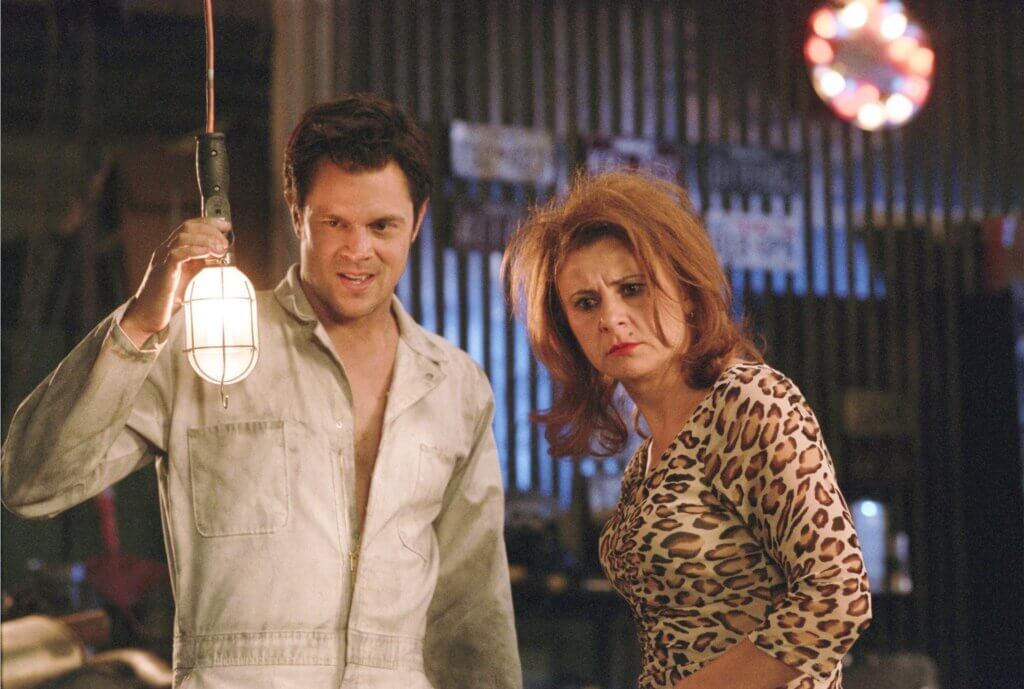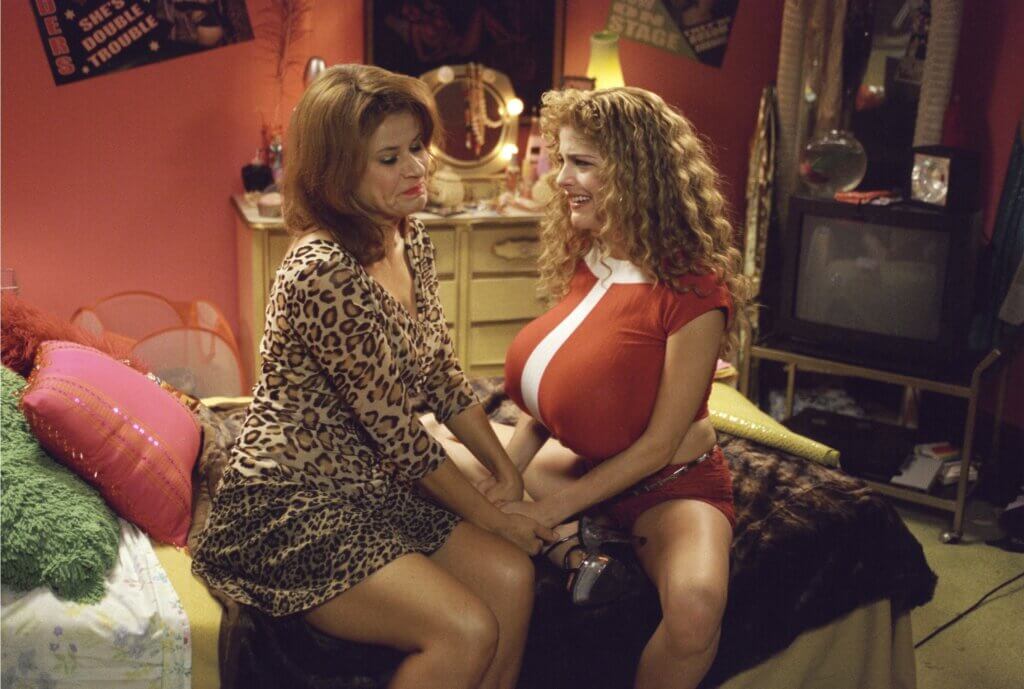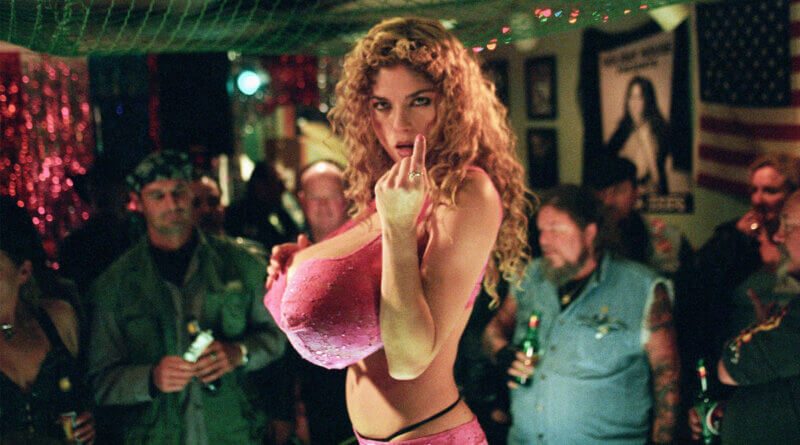Review: A Dirty Shame (2004), How a Budget Ruined the Pope of Trash
John Waters, the unequivocal “Pope of Trash,” has not directed a feature in over two decades. The reason? A Dirty Shame (2004). As a fan of Tracey Ullman, I went into A Dirty Shame expecting something genuinely funny that would land comfortably between low-brow and high-brow humor. I also respect — though don’t necessarily enjoy — John Waters’ love for transgression and all things trashy, so I expected A Dirty Shame to lean much closer to the low-brow than the high. What I didn’t expect was one of the worst films I’ve ever seen.
A Dirty Shame tells the story of Sylvia Stickles (Tracey Ullman), who is one of the “neuters,” a puritanical group of conservative, anti-sex citizens of Baltimore, Maryland. They are opposed by the small but growing group of “perverts,” sex addicts looking to break every taboo. Sylvia’s daughter, Caprice (Selma Blair), remains locked up because she is one of the aforementioned perverts and a favorite go-go dancer at the local dive bar, thanks in no small part to her comically large breasts.
When Sylvia Stickles gets hit in the head by a passing car, she encounters Ray-Ray Perkins (Johnny Knoxville), the local mechanic and a self-appointed “Sex Saint.” He opens Sylvia’s eyes to decadence and hedonism. As more people hit their heads in strange ways and become sex-crazed, chaos ensues as the neuters and the perverts clash throughout town.
Based on the above description, you might think that A Dirty Shame is a rompy sexploitation film. There’s just one problem: there’s no sex! There are one or two sequences that feature nudity, but it is a surprisingly tame film with a very immature approach to anything explicit.

If you grew up with the Internet (like I did), do you remember the first time you Googled things about sex to see what would come up? Well, take that first search history, sanitize it, and you’ve got A Dirty Shame. It’s like diving into a teenager’s imagination to see what they think sex is like, or what they think could be “edgy.” Rather than satirizing American society’s more prudish elements, the film just knocks you over the head with the cheapest, dumbest double-entendres and sexual innuendos imaginable.
Apparently, John Waters made the film after learning about new sexual terms on the Internet, and it shows. The characters overexplain terms that, at least nowadays (more than two decades after the film was made), are pretty common knowledge. For example, a “Bear” is typically a larger, hairy gay man. Most of us know this. Somehow, that in itself gets turned into one of many ill-advised running gags throughout the film. It’s not a joke, it’s just a description. Yet, somehow, it’s meant to be funny.
I’m actually surprised that the film got an NC-17 rating, because it’s so unbelievably shy in its approach to sex. Just having people grope each other and make out and use “dirty” words is enough to warrant the rating, apparently.
But I’ve gotten away from the one and only worthwhile conclusion I could make from this film: some indie filmmakers really shouldn’t be given a budget. John Waters did far more to push the boundaries of what could be shown in a film with $12,000 when he made Pink Flamingos (1972) than he did with $15 million in 2004.
A Dirty Shame is aptly named. It’s a shame that some filmmakers, when given enough room (i.e. budget) to do everything they’ve ever wanted, blow it. John Waters, like many indie filmmakers before him, was better off figuring out how to do things without money than throwing bags of cash at a bad idea.
» Also Check Out: 10 Best Severin Films for Philosophy Students
A Dirty Shame is the worst of Waters’ forays into “mainstream” filmmaking, following Cecile B. Demented (2000) and Pecker (1998). The budgets kept getting bigger with each subsequent film, but the ideas kept getting worse.

As has been discussed ad nauseam, a lack of funding often forces filmmakers to get more creative. I know that some filmmakers have disagreed with this idea. In an interview, Orson Welles famously answered, “Did my poverty help my creativity? Uh, no.” But as someone who worked in and around both independent and commercial films for years, I personally believe that money is, more often than not, an excuse to be less creative. It’s not always the case, but working with micro-budgets usually forces the brain to figure out the most creative way to tell a story.
As the “Pope of Trash,” John Waters was meant to be forever in the world of micro-budget filmmaking. Of course, one would expect that the longer you work, the more acclaim you achieve, and the more money you deserve to make for your efforts. And I agree! But pouring more money into the production only drains Waters of what made his early films so distinctive. They were dirty, ugly, abhorrent even. A Dirty Shame looks like a white-washed bastardization of many of his ideas rolled into an incoherent mess of a film.
There are very few films that I would categorize as unwatchable, but A Dirty Shame runs dangerously close to falling into that category. It’s not the most disturbing film of all time — far from it. What I would have given for it to be disturbing, repulsive, or transgressive in any meaningful way! Instead, when the credits rolled, it truly felt like one of those moments when I get very quiet and contemplative. I think about the span of my life, how fast time flies by, and how little time we have on this Earth. With great dread, I could only mutter to myself, “Well, I will never get those 84 minutes back.”
A Dirty Shame (2004) Movie Rating: ★ out of 5
If you hate yourself and you’d like to watch A Dirty Shame (2004), the film is currently available to rent or purchase via Amazon. For more film reviews like this one, be sure to check out the Philosophy in Film homepage!

